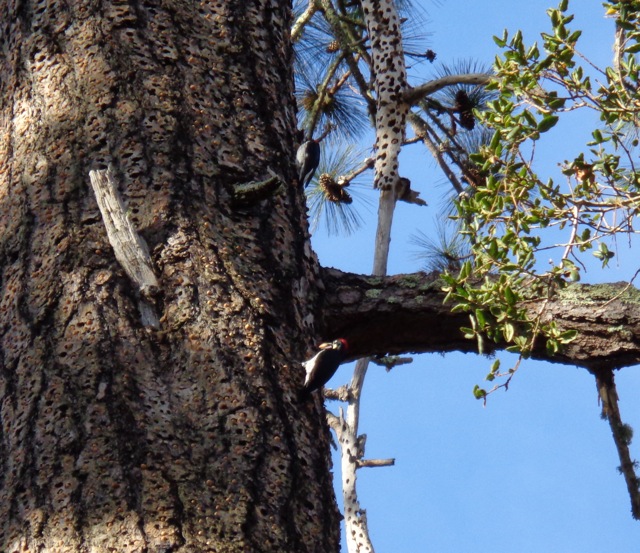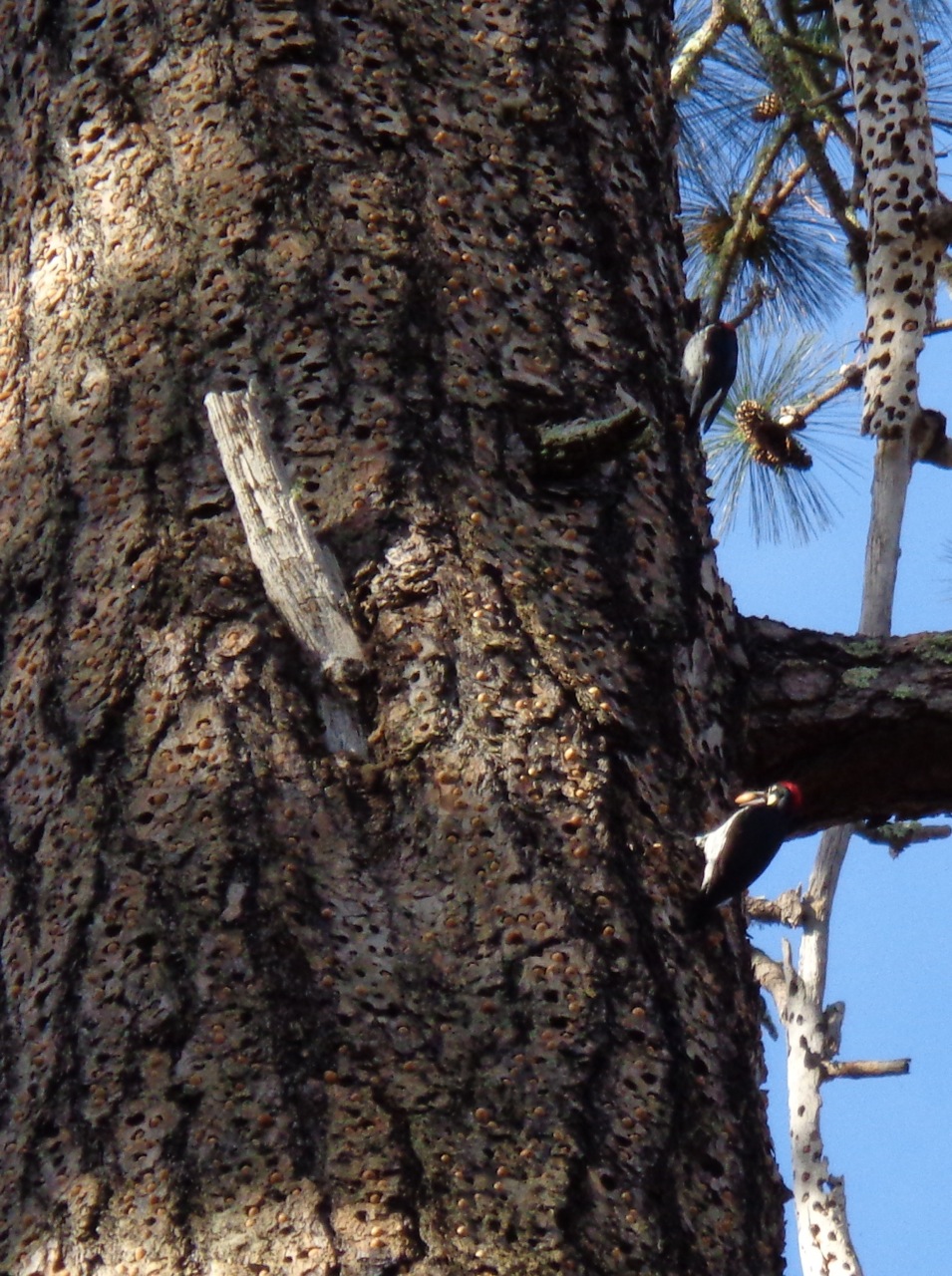Happy New Year! Here’s our first chess problem of the year, which doesn’t look like a chess problem: How many acorns do you see in the picture?
How many acorns do you see in the picture?
Yesterday I went hiking with my wife and one of her friends in a state park near Santa Cruz, and toward the end of our walk I took this photo of two woodpeckers in a tree. Here’s a somewhat enlarged version so you can see the woodpeckers more clearly.
If you’re like me, you don’t see any acorns in this picture at first. But then when you look more closely at the lower woodpecker, you start to realize that he’s got something in his mouth. In fact, it’s an acorn. Hooray, there is one acorn in the picture!
Then you start looking even more closely. You realize that all over the tree there are woodpecker holes. Hundreds of them! Well, that’s cool. We all know that woodpeckers peck holes in trees. But why do they do that?
As you’re thinking over that question, you start to realize that most of those holes are not empty. In fact, they have something brown peeking out of them. And then it hits you… Every one of those holes contains an acorn. This picture, which didn’t seem to have any acorns at first, is full of them!
At this point I don’t really expect you to sit down and count all the acorns, because you’ve already gleaned the most important insight. On the other hand, if you’re like me, you’ll print out a page-sized copy of the image and circle all the acorns. (Don’t forget to count the one in the woodpecker’s beak!) I counted 572, but I’d give this estimate a wide range of uncertainty, maybe plus or minus 50 acorns. For those of you who work with computers, this might be an interesting challenge to an image recognition program, because there are quite a number of things that could be acorns or could just be bumps in the tree bark. I’d be interested in the count that an image recognition program would come up with, and how much guidance the program needs to come up with a reasonable count.
The lesson for chess players is to use lateral thinking. Lots of times you may not see the right solution to a position right away. But when you use your understanding of the various ingredients in the position, you may have more success. In this case, getting the right number of acorns (not zero, not one, but five-hundred-and-something) is not an exercise in vision but in comprehension. You have to realize that the bird is a woodpecker, that woodpeckers make holes in trees, that he has an acorn in his beak, that he is either taking it out or putting it into one of the holes … and then the solution dawns on you.
By the way, the woodpecker in the picture is an acorn woodpecker, Melanerpes formicivorus, and you can read more about it here.



